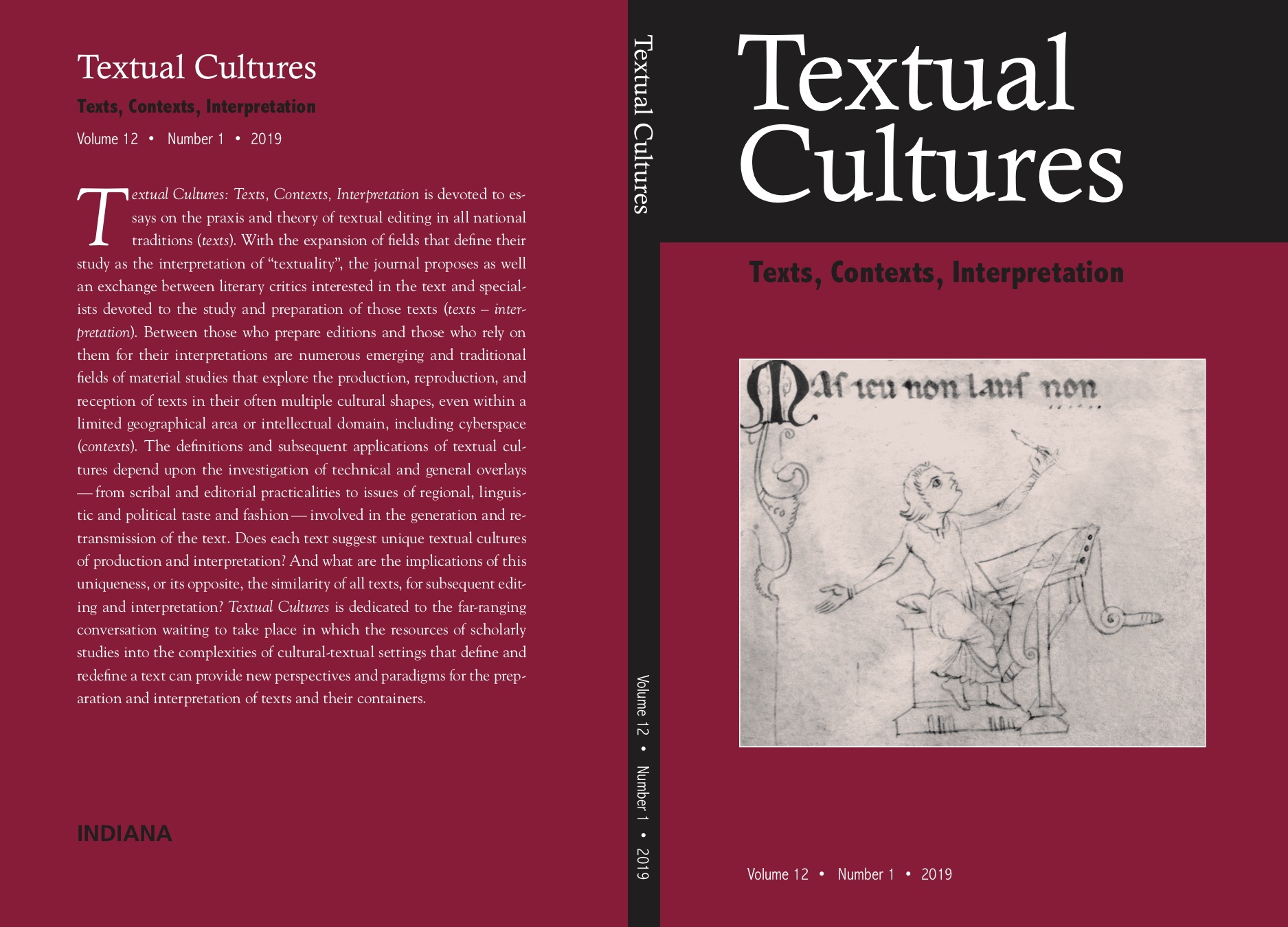Deep Mapping in Edward Hitchcock’s Geology and Emily Dickinson’s Poetry
Main Article Content
Abstract
The vernacular of deep mapping provides a valuable resource for comparing Edward Hitchcock’s geology textbooks — particularly Elementary Geology — with select geology-based poems by Emily Dickinson. Although Dickinson’s poems that reveal a clear understanding of nineteenth-century science (especially geological findings) have already been critically analyzed by scholars such as Richard Sewall, Hiroko Uno, and Robin Peel, Dickinson’s verse has not yet been assessed from the vantage point of the complex layerings of literary deep mapping. Moreover, Dickinson’s poetic explorations of distinct timelines and phenomena in both human and natural history can be aligned in many instances not only with the language of Hitchcock’s textbooks, but also with the drawings, maps, charts, and cultural contexts embedded in these volumes. The language, imagery, inquiries and conjectures in poems by Dickinson that are explicated in this essay all have clear (as well as more nuanced) ties to Hitchcock’s Geology. My study proposes that even with their different genres and diverse authorial intentions, both Hitchcock and Dickinson engage in similar rich and multivalent approaches to what is clearly an incipient version of modern deep mapping.
Downloads
Article Details
Authors who publish with this journal agree to the following terms:
- Authors retain copyright and grant the journal right of first publication with the work simultaneously licensed under a Creative Commons Attribution License (see:http://creativecommons.org/licenses/by/3.0/us/) that allows others to share the work with an acknowledgment of the work's authorship and initial publication in this journal.
- Authors warrant that their submission is their own original work, and that they have the right to grant the rights contained in this license. Authors also warrant that their submission does not, to the best of your knowledge, infringe upon anyone's copyright. If the submission contains material for which an author does not hold the copyright, authors warrant that they have obtained the unrestricted permission of the copyright owner to grant Indiana University the rights required by this license, and that such third-party owned material is clearly identified and acknowledged within the text or content of their submission.
- Authors are able to enter into separate, additional contractual arrangements for the non-exclusive distribution of the journal's published version of the work (e.g., post it to an institutional repository or publish it in a book), with an acknowledgment of its initial publication in this journal.
References
Bakhtin, Mikhail M. 1981. “Forms of Time and of the Chronotope in the Novel”. In The Dialogic Imagination, edited byMichael Holquist, 84–258.Austin: Univer-sity of Texas Press.
Brantley, Richard. 2013. Emily Dickinson’s Rich Conversations: Poetry, Philosophy, Science. Basingtoke: Palgrave.
Burke, Edmund. [1757] 2008. A Philosophical Enquiry into the Origin of our Ideas of the Sublime and Beautiful. Oxford: Oxford World’s Classics.
Dickinson, Emily. 1998. The Poems of Emily Dickinson, 3 vols., edited by R. W. Franklin. Cambridge, MA: The Belknap Press of Harvard University Press.
———. 1958. The Letters of Emily Dickinson, 3 vols., edited by Thomas H. Johnsonand Theodora Wa r d . Cambridge, MA: Harvard University Press.
Eberwein, Jane Donahue. 1996. “‘Siren Alps’: The Lure of Europe for American Writers”. The Emily Dickinson Journal 5.2: 176–82.
Emerson, Ralph Waldo. 1983. Essays and Lectures, edited by Joel Porte. New York: The Library of America.
Fishkin, Shelley Fisher. 2011. “‘Deep Maps’: A Brief for Digital Palimpsest Mapping Projects (DPMPs, or ‘Deep Maps’)”. Journal of Transnational American Studies, 3.2. Web. Retrieved from https://escholarship.org/uc/item/92v100t0
Harms, Tekla A. 2011. “The Hitchcock’s Classroom Charts”. In Orra White Hitch-cock: An Amherst Woman of Art and Science, edited by Robert L. Herbert and Daria D’Arienzo, 49–55. Amherst: Mead Art Museum.
H e at-M o on, William Least. 1991. PrairyErth: (a deep map). Boston: Houghton Mif-flin.
Herbert, Robert L., ed. 2008. A Woman of Amherst: The Travel Diaries of Orra White Hitchcock, 1847 and 1850. Bloomington, IN: iUniverse. Herbert, Robert L. and D’Arienzo, Daria. 2011. Orra White Hitchcock: An Amherst Woman of Art and Science. Amherst: Mead Art Museum.
Hitchcock, Edward. 1851. The Religion of Geology and its Connected Sciences. Boston: Phillips, Sampson, and Company.
———. 1844. Elementary Geology, 3rd edition. New York: Dayton & Newman, Web. htt ps:// babel.hat hit r u st.org /cgi/pt?id=ien.355560 05137955;view=1up;seq=11
Howa rt h, William. 1983. Thoreau in the Mountains. New York: Vintage Books.
Maher, Susan Naramore. 2014. Deep Map Country: Literary Cartography of the Great Plains. Lincoln: University of Nebraska Press.
Macfarlane, Robert. 2004. Mountains of the Mind: Adventures in Reaching the Sum-mit. New York: Vintage.
Orsini, Daniel. 2016. Galactic Pilgrim. Cranston, RI: Quartinity Books.
Patterson, Rebecca. 1979. Emily Dickinson’s Imagery, edited by Margaret H. Free-man. Amherst: The University of Massachusetts Press.
Peel, Robin. 2010. “Poetry, Paleontology, and Geology”. In Emily Dickinson and the Hill of Science, 13–72. Madison, NJ: Farleigh Dickinson University Press.
Rich, Adrienne. 1976. “Vesuvius at Home”. Parnasus: Poetry in Review 5.1. http://par-nassusreview.com/archives/416
Roorda, Randall. 2001. “Deep Maps in Eco-Literature”. Michigan Quarterly Review:Reimagining Place 40:1, 257–72.
Sielke, Sabine. 1996. “Dickinson’s Threshold Glances, or Putting the Subject on the E d ge”. Emily Dickinson Journal 5.2: 93 –9.
Sewall, Richard B. 1974. The Life of Emily Dickinson. New York: Farrar, Straus and Giroux.
Shell ey, Percy Bysshe. “Mont Blanc: Lines Written in the Vale of Chamouni”. Poetry Foundation. Web.www.poetryfoundation.org.
Uno, Hiroko. 2001. “Geology in Emily Dickinson Poetry”. Kobe Jogakuin Daigaku 48, 1–25.
White, Fred D. 1992. “‘Sweet Skepticism of the Heart’: Science in the Poetry of Emily Dickinson”. College Literature 19.1: 121– 8.
